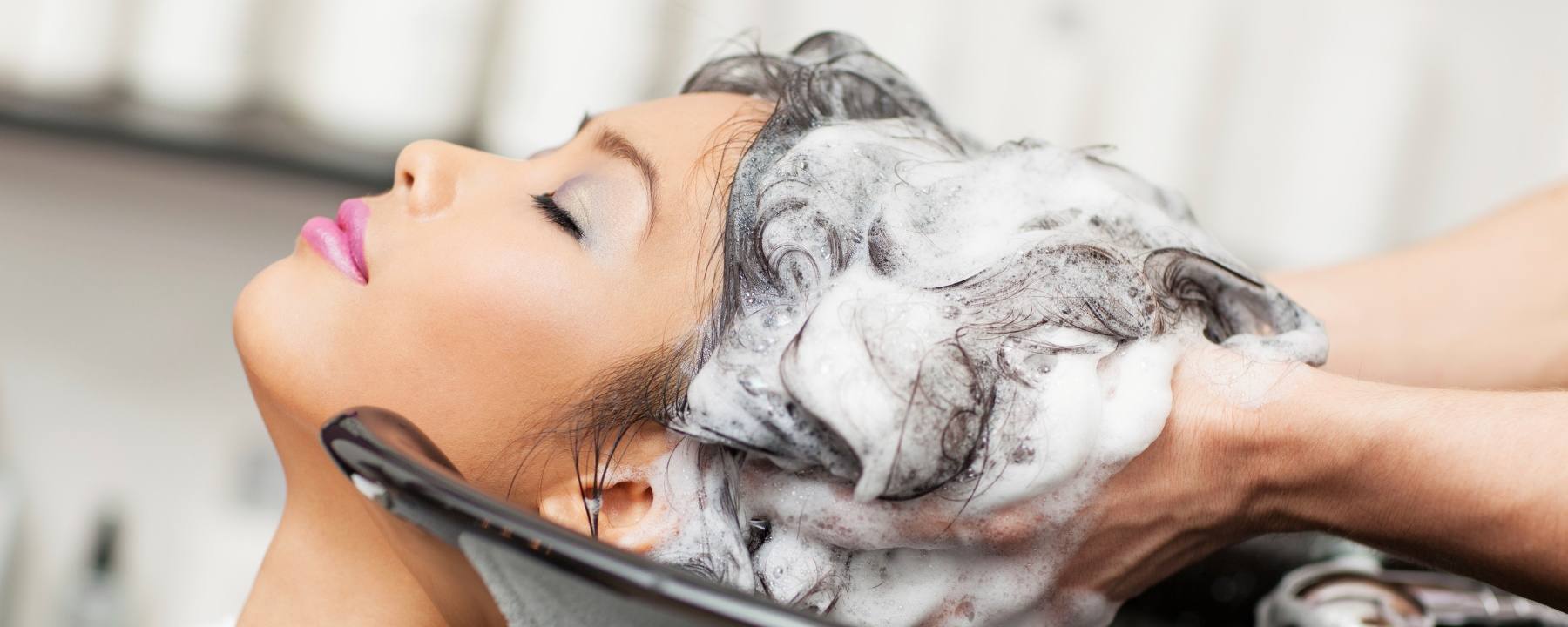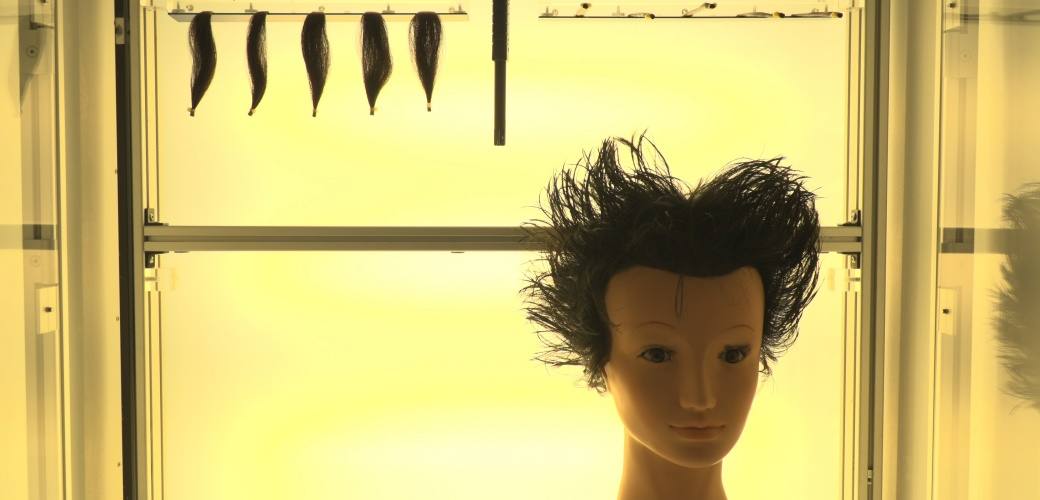
Hair and scalp
The myth about “dry hair”
It would be a quite logical and plausible conclusion: if your hair is dry – maybe it feels like straw – then the issue must be a lack of water. But is it actually true? We dug deep into this topic with our colleague Dr. Hans-Martin Haake, Head of Application Technology Personal Care at BASF. It turns out that things aren't always as they seem.
Do you have dry hair? If so, you are not alone. Many people know this feeling. But are you also one of those people who try to remedy dry hair by hopping under the shower because they think it is due to a lack of water? You are? Then we need to clear up this myth once and for all. First off, let’s take a look at the dictionary to find the meaning of “dry”:
Source: https://www.merriam-webster.com/dictionary/dry
- free or relatively free from a liquid, especially water; not being in or under water; devoid of natural moisture
- marked by the absence or scantiness of secretions; characterized by exhaustion of a supply of liquid
Based on this description, it is obvious to assume that your own “dry” hair is due to a lack of water. But allow us to now define what “humidity” means in this context.
The dictionary writes:
- A moderate degree of wetness
- Dampness, moistness
Source: https://www.merriam-webster.com/dictionary/humidity
The synonym “wetness” is also quick to nudge our thoughts in the direction of water. And if by now we believe moisture equals water, then the following may come as something of a surprise: "Hair that is "dry," i.e. hair that feels dry, actually contains no less water than hair described by test subjects as “normal,” “not dry” or “healthy,” explains Dr. Hans-Martin Haake, Head of Application Technology Personal Care at BASF. “In essence, the hair's water content depends primarily on the external air humidity”.
That's that myth busted. End of article. Not quite. There's more to be said here.
A brief explanation of the concept of relative humidity
Relative humidity is stated as a percentage, and indicates the ratio of air to water (steam). If the relative humidity is 100%, the air is saturated with the maximum amount of water vapor. However, the amount of water that can be contained in the air depends very much on the temperature. This is why it is known as “relative” humidity. More water can be absorbed as the air temperature increases.
Many of you probably equate “dry” hair with damaged hair. "Coarse" and "straw-like" are terms that are often used to describe dry hair. "And that's fine. However, the description of “dry hair” is applied based on how it feels. It actually has nothing to do with the hair's water content," explains Haake.
When we talk about healthy hair, we usually mean hair that has just grown out of the scalp, i.e. young hair. The surface of the hair still looks intact, as stress factors have not yet been able to cause any damage either on the outside or on the inside. In this condition, the hair is hydrophobic, or water-repellent.
However, as described in one of our other articles, our hair is exposed almost daily to various stressors. Apart from well-known factors of air and environmental pollution, such as car exhaust fumes, industrial emissions, dust and so on, UV light and extreme temperatures also have an effect. They can damage healthy hair and/or exacerbate existing hair issues.
The outer layer (cuticle) and the fiber layer (cortex) of the hair become damaged, causing the surface of the hair to change. Its hydrophobic quality suddenly becomes hydrophilic, which means it has a strong affinity for water. As a result, damaged hair can absorb water more quickly than undamaged hair.
But, as described above, the actual water content depends almost exclusively on the external air humidity.
You cannot feel the water content, at least not in the terms we think of water as a liquid – that is, water from a tap, in a stream or lake, or as a refreshing drink in a glass. Thinking of water in this way is easy to grasp. But water content in hair? Not so much, which is why we do not notice it being absorbed into our hair.
A matter of perception
To better understand the paradox between reality and perception, Michael G. Davis, a principal scientist at Procter & Gamble, conducted a test with test subjects and panelists. He investigated how subjects perceive hair containing varying amounts of water. As we said above, hair reacts strongly to the water content in the air, i.e. its humidity.
For this test, strands of hair were stored at two different levels of relative humidity. Davis was able to show through measurements that the hair stored at a higher relative humidity (80%) contained significantly more water than hair stored in dry air (15% relative humidity). So far, so good, and a conclusion that science has known about for a long time.
The test subjects were then asked to feel the strands of hair when blindfolded and share their perceptions. Interestingly, the strands of hair that contained more water were described by the test subjects as dry.
In the second part of the experiment, strands of hair were treated in one case with a non-conditioning shampoo and in the other case with a conditioning shampoo plus conditioner. The strands of hair were then both stored at an average relative humidity of 45%. The measurement of the water content showed identical levels. However, this is not really a surprise, because the hair was stored at the same humidity.
The lipids are decisive
However, the test subjects rated the hair treated with the non-conditioning shampoo as drier and more damaged. By contrast, the hair strands treated with the nourishing shampoo and conditioner were perceived as smoother, less damaged and less dry . It's worth repeating, the water content was identical.
As a result, Davis was able to show that people can feel differences in the hair's water content (part 1 of the experiment). However, hair that contains more water is perceived as drier. Hair treated with nourishing shampoo and conditioner was described as less dry (part 2 of the test).
Stress factors for hair
You do everything you can to look good, you have a hairstyle you want to try, but you know straight away that it will be too much for your hair.
More informationIn “dry” hair, i.e. damaged hair, there are far fewer natural lipids present. To counteract the feeling of dryness, it is therefore important to use conditioning shampoos, conditioners, moisturizers and masks. These hair care products improve the condition of the hair, at least temporarily, with the aid of nourishing substances. Treatment with products that contain lipids can help the hair to regenerate a little, and make it feel “pleasant” and “normal” again. A good conditioner can change the perception of how the hair feels. The general condition of the scalp and the amount of sebum produced also play an important role.
Colleagues from the US have published an interesting article on this.
Our colleagues Amber Hubschmitt and Dr. Stella Betancourt from the US recently proved the importance of lipids and how significant their impact is on consumer perceptions. With their Sensory Flash Profile study, the pair has shown that lipids in hair care products help make cared-for hair feel less dry. In other words, combating “dry” hair is nothing to do with water – it all comes down to lipids.
Okay, this time for real: That's that myth busted. End of article.
Next time you take a shower to deal with dry hair: don't be disappointed if your hair still feels dry after a few refreshing minutes under the shower. It's not the solution to the problem. After all, things aren't always what they seem. Next time, be sure to use a good shampoo and conditioner as well.


